It’s not uncommon for tour operators to advertise visits to local communities as part of a trip itinerary, promising travelers authentic, transformative experiences and intimate interactions with locals. But how can you be sure that your visit really benefits a local community? How do you know that including such a stop on your itinerary really has value to others, and is not just a case of “social washing”—soothing a guilty conscience and covering over the negative effects travel can have?
To answer this question, I wanted to share a few insights I’ve gained through my work with several communities that have turned to tourism and welcomed travelers.
A Homestay in Yunguilla, Ecuador
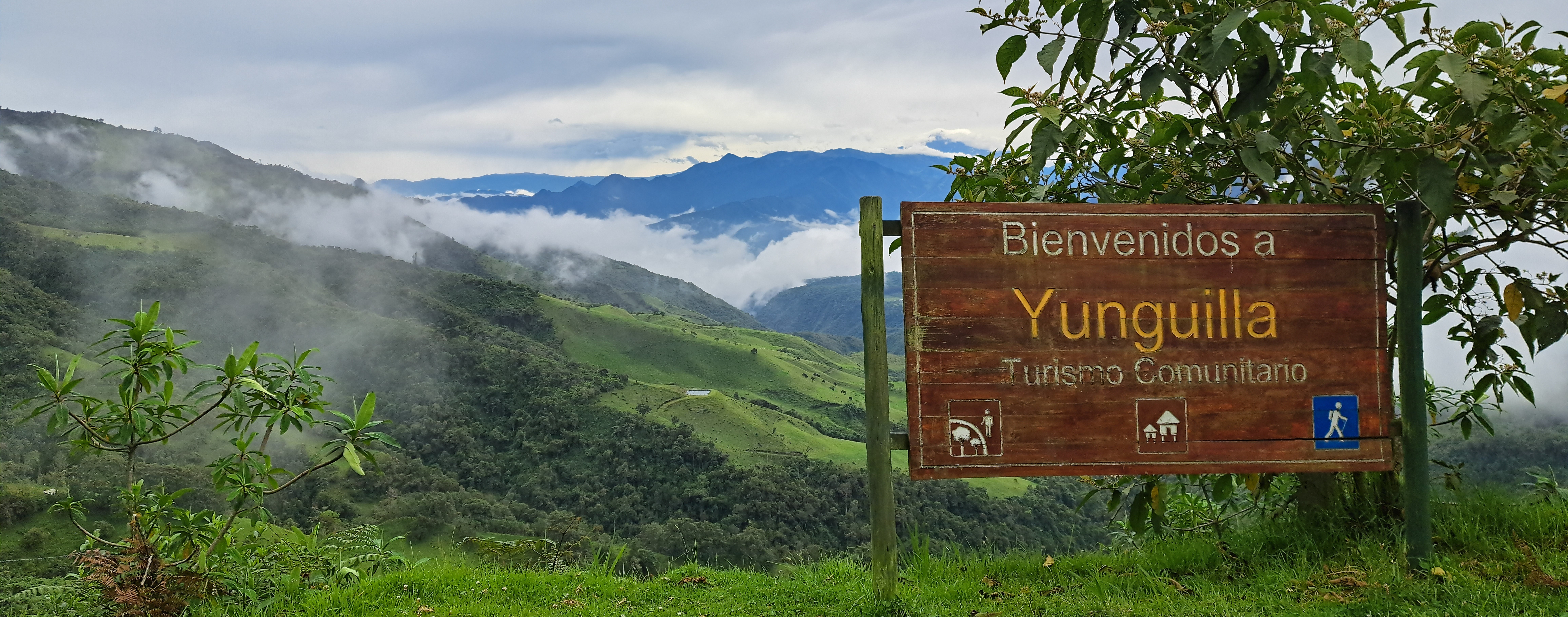
In Yunguilla, the day starts with the rising of the sun. Out the window, I look out onto hummingbirds in Rosa and Rolando's garden and, in the distance, 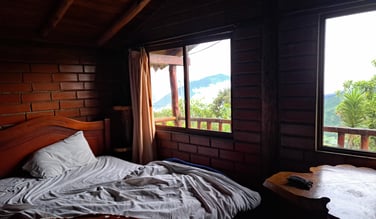 Pichincha, a mighty volcano nearly 5,000 meters tall. It is only 7 o'clock, but downstairs everyone is already busy, cooking and working. The kitchen table is decorated with flowers, balloons, and cakes, because today is Mother's Day. The whole community is bustling, as more than 200 guests are expected at the community-run restaurant to celebrate. Everyone is involved, whether by playing music, selling local products such as cheese, jam, or handicrafts. Rolando marches off to the party with his guitar and a home-brewed liqueur, which he will serve to the mothers to celebrate.
Pichincha, a mighty volcano nearly 5,000 meters tall. It is only 7 o'clock, but downstairs everyone is already busy, cooking and working. The kitchen table is decorated with flowers, balloons, and cakes, because today is Mother's Day. The whole community is bustling, as more than 200 guests are expected at the community-run restaurant to celebrate. Everyone is involved, whether by playing music, selling local products such as cheese, jam, or handicrafts. Rolando marches off to the party with his guitar and a home-brewed liqueur, which he will serve to the mothers to celebrate.
Staying with a host family means immersing yourself in the everyday life of Yunguilla. As soon as you enter the dense cloud forest of Ecuador and come to the community, an atmosphere full of hospitality and warmth surrounds you. The family houses, surrounded by lush vegetation, present themselves as true jewels in the midst of natural splendor.
Over the years, families have expanded their homes and now offer cozy guest rooms with private bathrooms. These rooms invite visitors to relax in an intimate setting, while immersing themselves in the community. Along with cooking, eating, and sharing in life with the family, local guides offer excursions into the mystical cloud forest to explore its fascinating beauty.
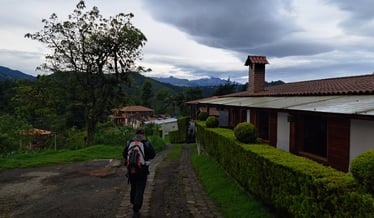 "The community of Yunguilla wants to debunk the idea that rural people live in poor conditions," Rolando says. He has been involved in the organization for more than 20 years and seen how the community has opened their homes and expanded them to provide guests with the utmost comfort and privacy. Here, the interests of travelers are seen to complement those of the community, which benefits in many ways from having visitors. Locals here make a living from tourism, and even sell regional products under the brand "Yunguilla". Young people in the community are full of energy and ideas for how to further develop the project and make it sustainable. Profits are reinvested, and the surrounding cloud forest receives attentive care, with measures taken to protect the unique flora and fauna.
"The community of Yunguilla wants to debunk the idea that rural people live in poor conditions," Rolando says. He has been involved in the organization for more than 20 years and seen how the community has opened their homes and expanded them to provide guests with the utmost comfort and privacy. Here, the interests of travelers are seen to complement those of the community, which benefits in many ways from having visitors. Locals here make a living from tourism, and even sell regional products under the brand "Yunguilla". Young people in the community are full of energy and ideas for how to further develop the project and make it sustainable. Profits are reinvested, and the surrounding cloud forest receives attentive care, with measures taken to protect the unique flora and fauna.
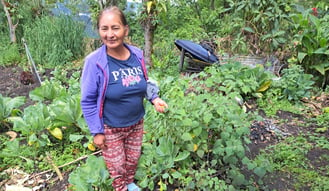
Yunguilla families describe the experience of having guests in their homes positively. Sometimes, travelers are shy at first or feel nervous about the language barrier, but locals have found these issues are quickly overcome, often with laughter.
“It takes a willingness to embrace new situations,” Rosa says. “And a dash of humor always helps!”
A Favela Visit in Morro da Babilônia, Rio de Janeiro
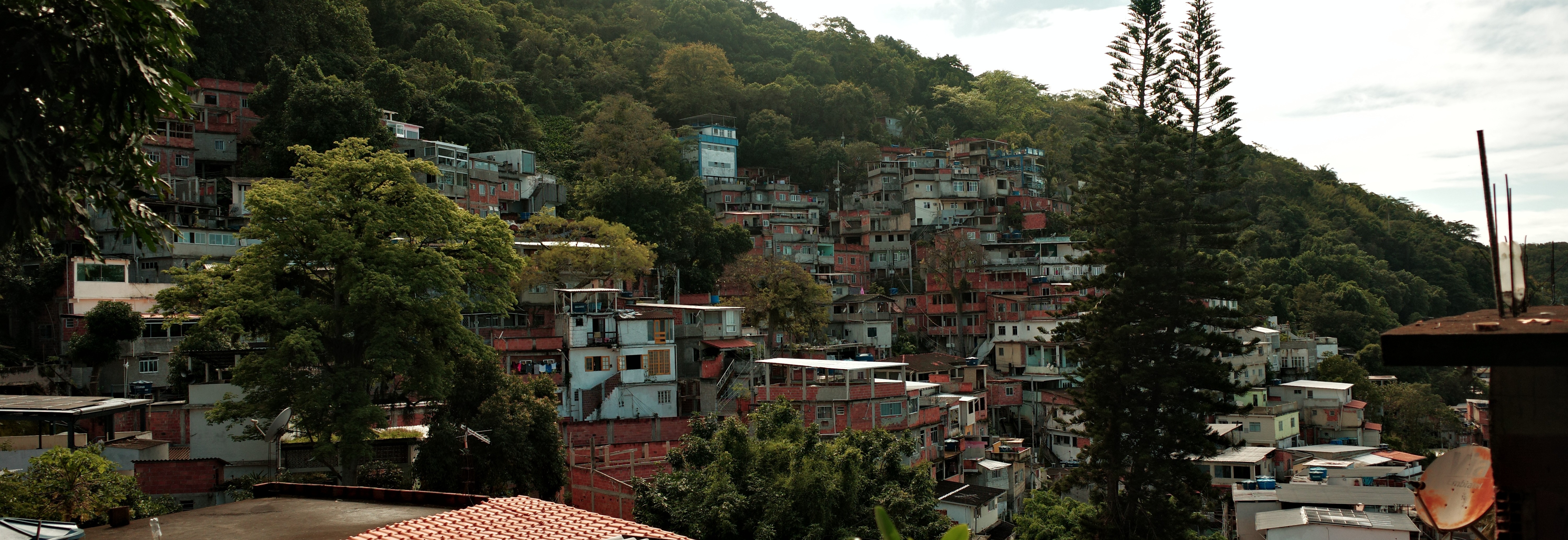
Edson is waiting with a big smile for a tour group. He works as a local guide for visits to the Babilonia favela, where he grew up and continues to live with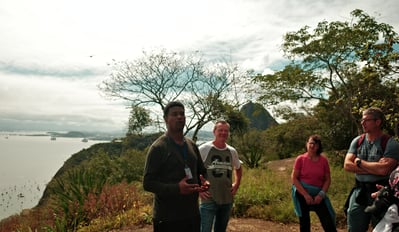 his family. He proudly tells us that his daughter has passed the entrance exam for the state university, thus breaking with statistics that say children from favelas rarely pass the exam.
his family. He proudly tells us that his daughter has passed the entrance exam for the state university, thus breaking with statistics that say children from favelas rarely pass the exam.
Edson's first question to the tour group is: "What do you imagine when you think of favelas?” He has let us know that no topic is off limits on the tour and that there are no wrong answers. The group names things like corrugated iron roofs, crime, and poverty.
Edson explains the challenges that local residents face, including lack of access to good jobs, education, electricity, and water. With Edson leading the way, the group is greeted by local residents as well as his friends, family, and members of the organization CoopBabilônia.
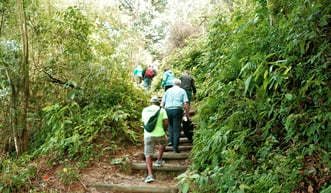 CoopBabilônia is a reforestation project initiated by residents of the favela. Along with favela tours, the project is dedicated to protection of the environment in Morro da Babilônia. They also play an important role in maintaining peace in the favela and offering young people an alternative to crime by allowing them to get involved in the community.
CoopBabilônia is a reforestation project initiated by residents of the favela. Along with favela tours, the project is dedicated to protection of the environment in Morro da Babilônia. They also play an important role in maintaining peace in the favela and offering young people an alternative to crime by allowing them to get involved in the community.
"CoopBabilônia wants to go slow with tourism for now, and currently offers guided tours only on request," reports Camilo, project coordinator at V Social. "That's perfectly fine. Tourism is not a universal solution. The neighborhood should rely on different sources of income."
The community approach in the favela allows residents to have a say in how tourism activities are organized. This increases the chances that residents will accept visitors, see the advantages of tourism, and enter into a dialogue with curious travelers.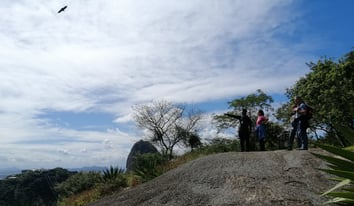
At the end of the group visit, Edson repeats his original question. Now, the group's associations with the word “favela” have expanded. Words like "open-minded," "cohesion," "community," and "green oasis" have been added. Edson seems satisfied with the visit, knowing he has helped to change the image others have of the place he calls home.
Meeting Kichwa Birth Attendants in the Amazon
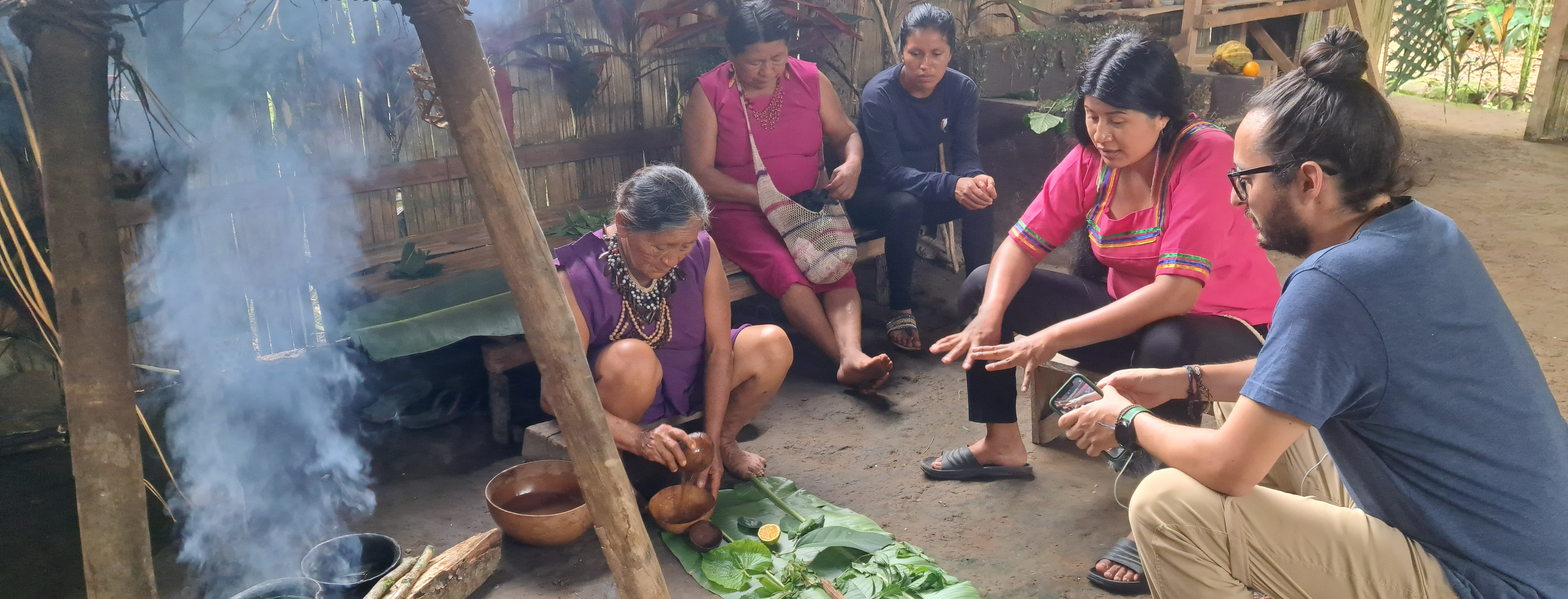
Ofelia is on her way to her next appointment. Dressed in purple, she pays tribute to her affiliation with the birth attendants of Amupakin. She is campaigning authorities and politicians to financially support and recognize the practices of the Kichwa birth attendants, Indigenous women who have delivered babies in the area for decades.
Over breakfast, Ofelia explains to me that the "Mamacitas" have no schooling and therefore no medical education. They have gained their extensive knowledge of natural medicine through traditions passed down from previous generations. Access to education for Kichwa women has been difficult, Ofelia says, adding that local authorities do not financially support birth attendants or do anything to preserve the practice. Sitting across from me, she recounts numerous discussions with local authorities, members of international non-profit organizations, and doctors to fight for the work of birth attendants to be recognized.
"For years, the women worked for free. Now we are proud to be able to pay them a minimum wage of US$300 per month. Of course, this is not enough. The minimum wage in Ecuador is US$450! They are entitled to a fair wage.”
-1.jpeg?width=341&height=199&name=medicinal%20chakra%20tour%20by%20Kelly%208%20(2)-1.jpeg) Knowledge of the Amazon—of how to live in harmony with nature and the healing power of many plants—is concentrated in this community. The birth attendants of Amupakin have formed a collective in order to preserve traditional birthing practices as well as the knowledge surrounding Kichwa medicine. Tourism offers them the opportunity to differentiate their sources of income and gives the organization visibility.
Knowledge of the Amazon—of how to live in harmony with nature and the healing power of many plants—is concentrated in this community. The birth attendants of Amupakin have formed a collective in order to preserve traditional birthing practices as well as the knowledge surrounding Kichwa medicine. Tourism offers them the opportunity to differentiate their sources of income and gives the organization visibility.
The collective has developed numerous activities to teach visitors about their cosmology, way of life, and .jpeg?width=466&height=272&name=theatre%20play%20traditional%20labour%202%20(1).jpeg) connection with nature. These include a guided tour of the garden of medicinal plants they call chacra, a workshop on Kichwa face painting and its symbolism, and the offering of a meal made with local ingredients. The women have also opened a theater group where a play demonstrates how a vertical birth according to Kichwa practices takes place, since it is obviously not possible to invite visitors to witness a real birth. This is also a creative solution to overcome language barriers, since most visitors do not speak Spanish or Kichwa.
connection with nature. These include a guided tour of the garden of medicinal plants they call chacra, a workshop on Kichwa face painting and its symbolism, and the offering of a meal made with local ingredients. The women have also opened a theater group where a play demonstrates how a vertical birth according to Kichwa practices takes place, since it is obviously not possible to invite visitors to witness a real birth. This is also a creative solution to overcome language barriers, since most visitors do not speak Spanish or Kichwa.
In Amupakin, as in most other community projects, tourism emerged out of necessity. The majority of community members have no training in tourism or related subjects, but have learned through practice and use of their powerful intuition.
My own experiences, at these projects as well as others, show me that these visits are genuine and the effects they have on communities are positive. People invited me into their homes and shared with me their daily lives, and in turn I learned a lot about each area and its people.
The involvement of so many people in these communities in tourism allowed me to really get to know places in all their facets. In the conversations I had and by living with communities for a short time, I encountered not just one, but many points of view, which made my visit all the more valuable.
I think it's important to understand that the time we travelers spend in a place will always be limited, but the impact we can have on local residents is significant, as well as permanent. If we as travelers start with this understanding, I am sure we can make the world a little better.
Here are a few tips for enriching travel experiences that will also benefit local communities:
- Learn a few words of the local language
- Hire a local guide
- Bring something from your own culture to share
- Pack your sense of humor—laughter connects people!
- Ask before taking a photo
- Show sincere interest. A visit is not about an Instagram photo or proof of a “real adventure”








